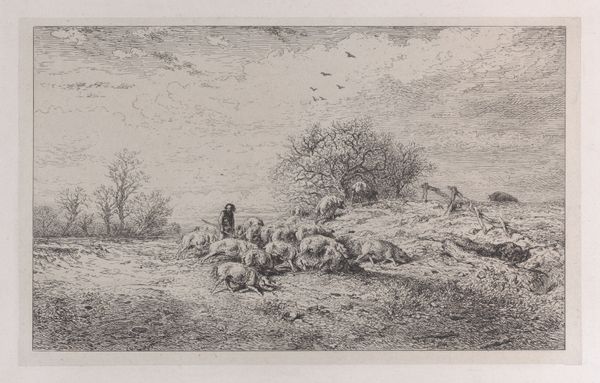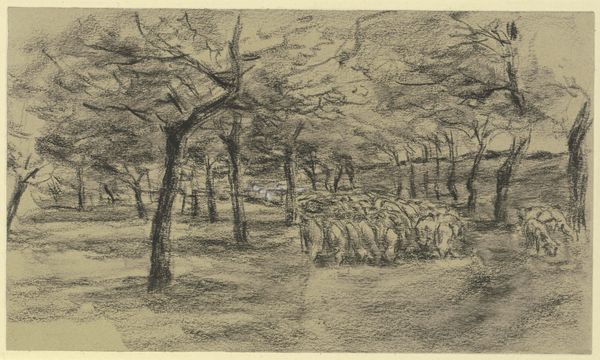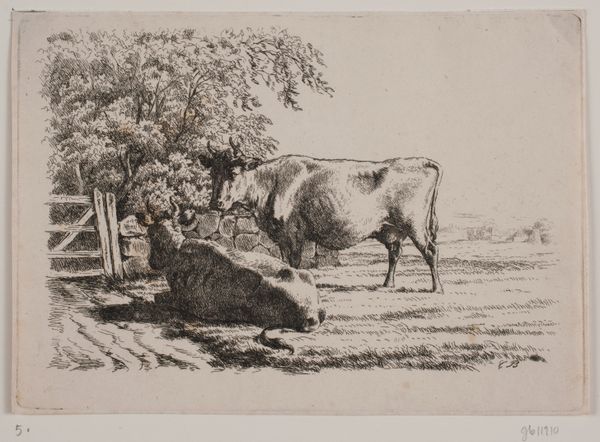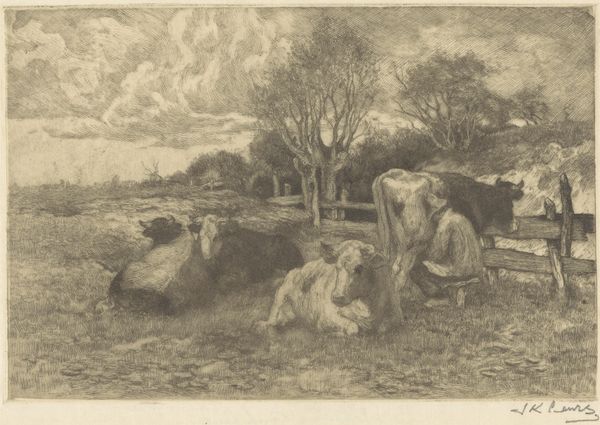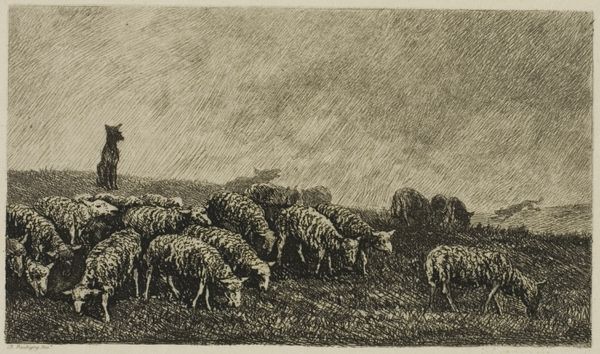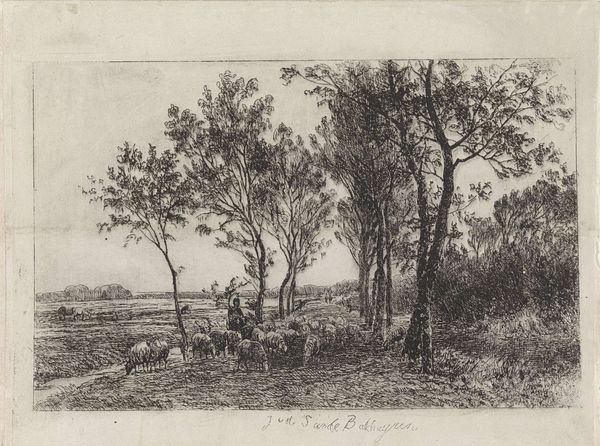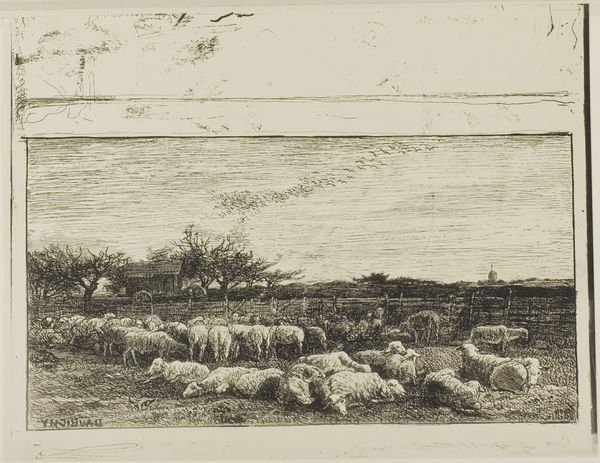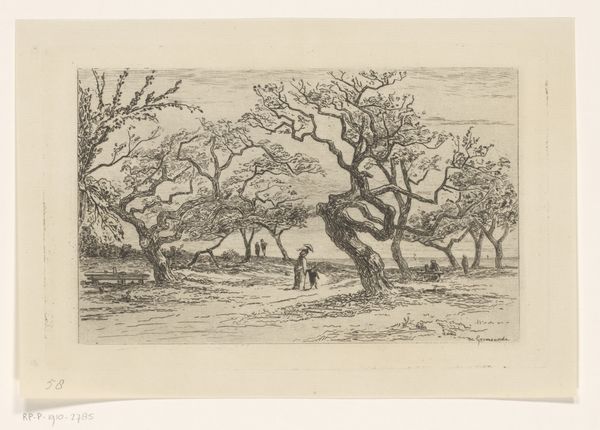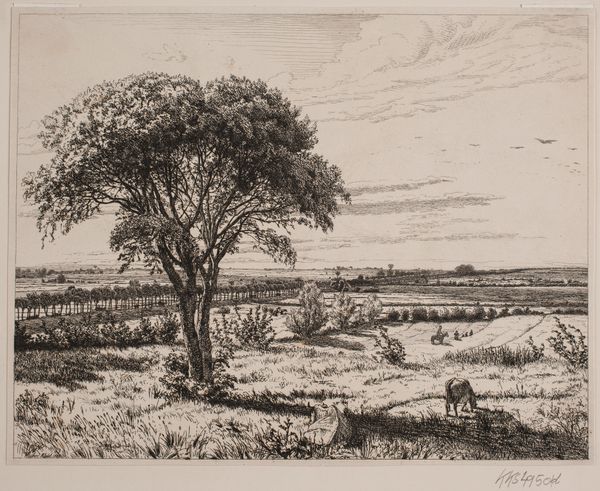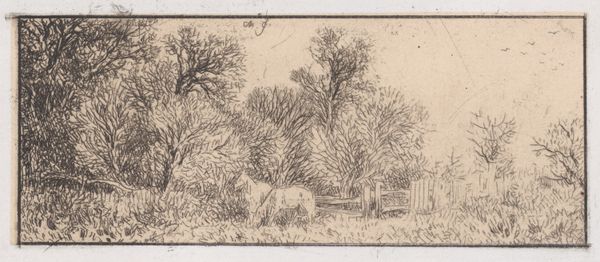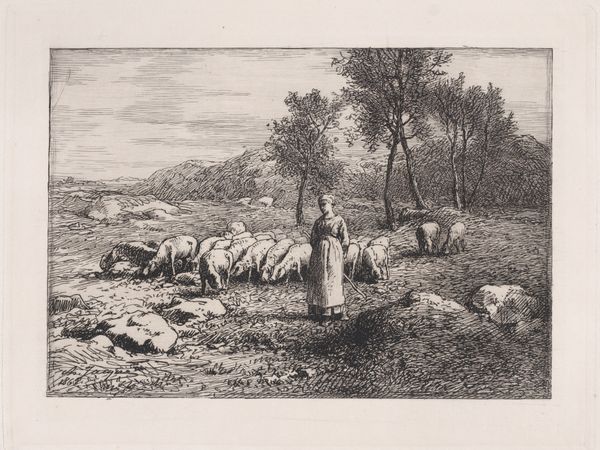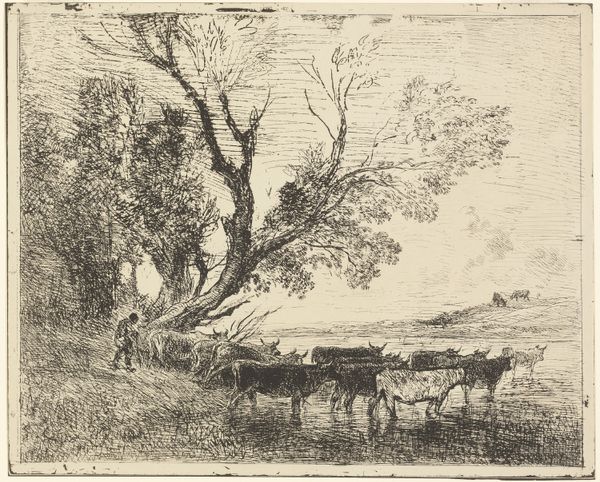
drawing, etching, paper, ink
#
drawing
#
etching
#
landscape
#
etching
#
paper
#
ink
#
realism
Dimensions: height 188 mm, width 247 mm
Copyright: Rijks Museum: Open Domain
Curator: This is "Weide bij Soeren," an etching by Willem G.F. Jansen, created sometime between 1886 and 1935. What strikes you about it? Editor: Immediately, I notice the earthiness, a kind of quiet domesticity evoked by the monochrome ink on paper and the subject: grazing sheep. It’s not monumental, but the material speaks to the everyday labor of rural life. Curator: The etching medium indeed lends itself to such intimate scenes, doesn’t it? Beyond the pastoral imagery, I find the placement of the sheep intriguing. See how the ewe nurses the lamb? A clear maternal symbol, but also one that touches upon cycles of life and nature’s rhythm. Editor: That's an interesting perspective, especially given the social context of late 19th, early 20th-century agrarian societies. An emphasis on fertility and survival would resonate deeply. It almost becomes a political statement about labor and sustenance through a simple, intimate portrayal. What can you tell me about the etching process that could provide clues on why the artists employed it? Curator: It may provide clues indeed! Etching allowed artists to achieve a detailed tonal range through layers of biting and ink application on the printing plate. This contributed greatly to representing different forms in the artwork. Notice how the soft willow leaves and the rough wool are represented. What meaning did those subjects hold? Editor: Thinking about the relationship between technique and imagery, etching made the reproduction of art more democratic; it moves art from being the work of lone "genius," and instead creates wider channels of dissemination. So it both describes a democratic subject—sheep grazing, everyday life—and the technique reinforces that thematic concern. Curator: Very astute! There's also something about the texture afforded by etching; it mimics the irregularities of nature itself, the roughness of bark, the subtle shadows within the flock. It gives the whole image a sort of weathered, aged quality, even if freshly printed. Editor: Which could add another layer: a conscious comment about art's relation to reality—it ages it from the very start. A smart choice of medium indeed, rather than oil painting which aims for illusion. Curator: Exactly. The symbol of the sheep takes on greater depth when viewed through these layers. The texture evokes familiarity with a landscape which Jansen observed directly. Editor: Yes, a kind of labor showing us how something is made, inviting participation. Thanks for taking the time to examine this unassuming but rich piece of artwork! Curator: Thank you as well! It is pieces such as these that allow us to gain fresh perspective.
Comments
No comments
Be the first to comment and join the conversation on the ultimate creative platform.
